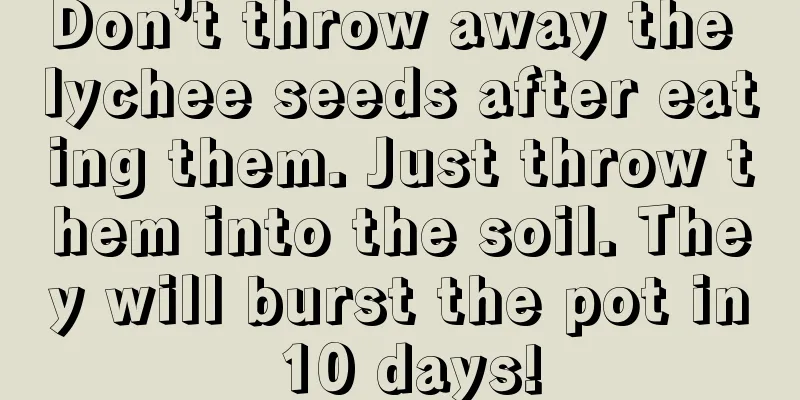When and how to plant wild rice stems? What season is suitable for planting?

Wild rice planting timeThe planting time of water chestnut is generally in spring and autumn. Spring planting is mostly around Grain Rain, while autumn planting has to wait until the Beginning of Autumn, which is usually carried out in spring. The temperature and humidity at this time are more suitable for the growth of water chestnut. How to plant wild rice stem1. Cutting treatment When harvesting茭白, select individual plants with good quality to keep, and wait until mid-December to dig them out with their roots, cut off the top and bottom, and keep the middle part for cuttings and transplanting. 2. Planting seedlings When transplanting water chestnuts, keep a row spacing of 50 cm and a plant spacing of 15 cm. At the same time, leave a 70-80 cm aisle between rows. The depth of transplanting should be controlled well, and a shallow water layer of 1-2 cm should be maintained. In order to avoid freezing and promote rooting and germination, the nursery field can be covered with plastic film. In addition, after the transplanting survives, appropriate fertilizer is needed. 3. Land preparation and fertilization Choose a field with flat land and deep soil. Make sure there is sufficient light and water. Plow the field and apply well-rotted farmyard manure. If rice has been planted before, increase the amount of base fertilizer. Then rake it flat and irrigate the field with water to a depth of 2-3 cm. 4. Planting The time for transplanting茭白 is usually April or May, when the seedlings have grown to 20 cm in height and the temperature of the paddy field is above 10 degrees. The seedlings are dug out with their roots and separated with a knife. Usually 3-5 healthy tillers are grouped together, and each group should have old stems on it. At the same time, do not damage the tillers and roots, and plant them in the field. Precautions for planting wild rice stemThe growth of water chestnuts will be affected by leaf blight, and spots will appear on the leaves, so the diseased leaves should be removed in time and sprayed with carbendazim for disinfection and prevention. If rust occurs, apply some fertilizer appropriately, and you can use diniconazole or ammonium chloride for spraying. |
<<: Salvia miltiorrhiza planting time and method planting technology and cultivation management
>>: How many kilograms can red onions be produced per acre?
Recommend
How to grow cornflowers in spring
1. Proper pruning The purpose of spring pruning i...
Notes on changing pots
Notes on changing pots When repotting the plant, ...
Where is red grape suitable for planting?
Red grape planting area Red grapes have strong ad...
Is mirror grass poisonous? Can it be grown at home?
Is mirror grass poisonous? The editor first tells...
How often should peony flowers be watered?
How often should peony flowers be watered? Peonie...
Can I spray vinegar on Chinese cabbage if it has bugs? (Spraying rice vinegar on cabbage is good for increasing yield)
Spraying some vinegar on cabbage can supplement a...
How to plant okra, planting time and management methods
Okra growth environment requirements Okra prefers...
Can green jade chrysanthemum be cultivated hydroponically?
Can green jade chrysanthemum be cultivated hydrop...
Where is golden camellia suitable for planting
Camellia chrysantha planting area Generally, Came...
How to prune watermelons and how to get more fruits?
Watermelon pruning time It is more suitable to pr...
How to prune pine red plum
When to prune pine red plum It is usually more ap...
How to prune roses
Pruning steps/methods Pruning after first floweri...
How to care for bougainvillea after its flowering period (management methods after bougainvillea has finished flowering)
How to care for bougainvillea during its off-flow...
How to grow tomatoes
1. Select seeds It is crucial to choose good qual...
Can plants be fertilized in winter? (Pothos, Chlorophytum... 5 common flower fertilization methods)
1. Can I apply fertilizer? Whether plants need to...









